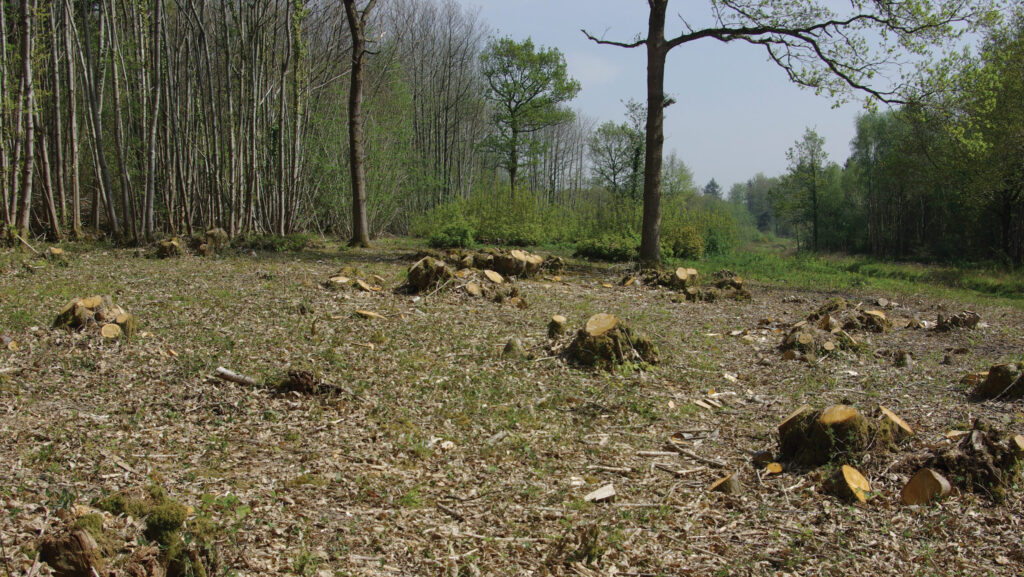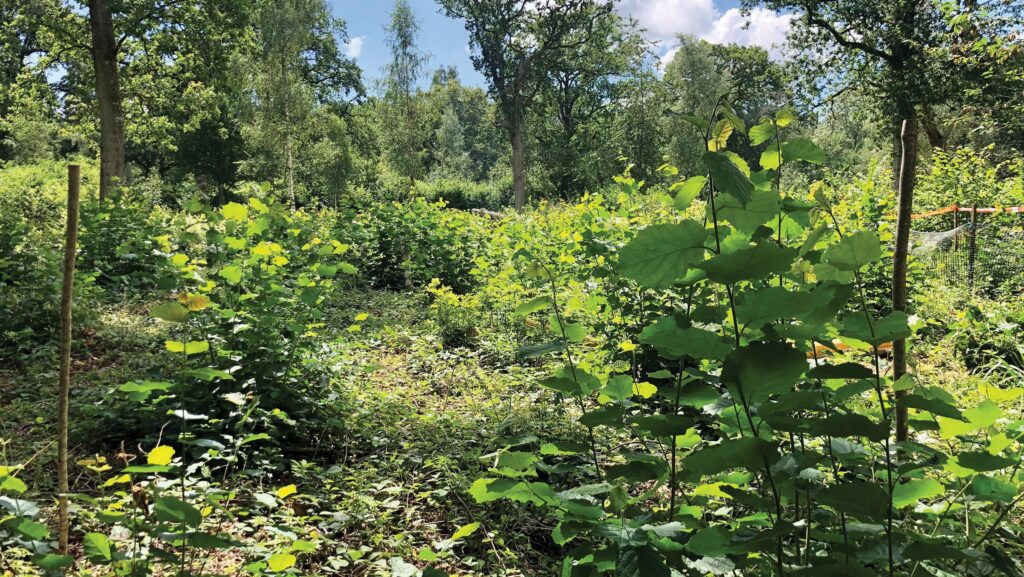Project offers free survey to promote coppice woodland
 Newly coppiced sweet chestnut © Forestry Commission
Newly coppiced sweet chestnut © Forestry Commission A new mapping project in England could act as a catalyst to encourage landowners to actively manage neglected coppice woodlands, creating opportunities for wildlife and a source of diversified income.
A combination of factors has seen the coppice area in England fall from 230,000ha in 1905 to an estimated 2,898ha today.
See also: Woodland creation – tax legal and practical advice
The National Coppice Federation (NCFed) says an emphasis on large-scale, mechanised forestry and softwood plantations, a greater availability of alternative plastic and metal products, and cheaper imported goods and materials all played a part in this decline.
However, climate change and greater emphasis on sustainability are helping to drive demand for coppice products, according to the NCFed’s More Coppice Into Productive Management (MCIPM) project, a survey-based initiative that hopes to get more coppice woodland back into active management.
MCIPM, which runs until March 2025, offers owners a free survey and advice.
Project manager Graham Morgan says: “We would like to hear from landowners and managers regarding the location of coppice, be it derelict, in-rotation or newly planted, and those with specific regional knowledge.”
The project is currently limited to three regions in England – the South West, Yorkshire and the North East, and the East and East Midlands.

Hazel coppice © Steve Fowkes
What is coppicing?
Coppicing involves cutting a tree close to the ground to encourage shoots to grow from the base of the tree, forming a “stool”.
These shoots grow rapidly to produce many stems, which can be harvested after seven to 20 years. Popular species for coppicing include hazel, willow, sweet chestnut and oak.
Why does the decline of coppice woodland management matter?
The decline of coppice woodland puts at risk a number of animal species that inhabit these areas, such as the nightingale, the pearl-bordered fritillary butterfly and the dormouse.
Managed coppice woodland also provides benefits to farmers, including carbon sequestration and opportunities to produce wood products for on-farm use or sale.
What the MCIPM project hopes to deliver
Among the project’s goals is improving the understanding of where coppice woodland is located, its condition, and the barriers and needs relating to coppice management and restoration.
A publicly available interactive summary map of coppice woodland and priority areas will be published online.
Regional coppice advisers are being organised to co-ordinate further action, and information resources will be produced for landowners and managers.
To protect the privacy of landowners, data from the project that is put into the public domain will be anonymous.
What the project provides for landowners
Landowners get a free coppice woodland survey from a specialist coppice surveyor, a brief summary report outlining the extent, nature and condition of their coppice, and key factors which might affect the viability of restoring and managing it.
Graham says: “They will get advice on who to speak to locally so they can take the next steps, should they choose to.”
Early access will also be provided to a free information guide on managing and restoring coppice, and support from a regional adviser.
What landowners can gain from managing coppice
Income can be generated directly from the sale of coppice products.
Graham says managing coppice woodland also provides the landowner with wider benefits and opportunities.
“These can include ramial chip [fresh uncomposted woodchip made from smaller diameter, younger tree branches] for use directly on the farm as a green fertiliser or mulch,” he explains.
There are also opportunities to attract biodiversity net gain (BNG) payments from developers and emerging woodland grant income, as well as incentives for delivering ecosystem services such as carbon sequestration.
“It is therefore possible to ensure that the coppice woodland is at least no longer a directly loss-making component of a land portfolio,” he says.
Details can be found on the project website.
